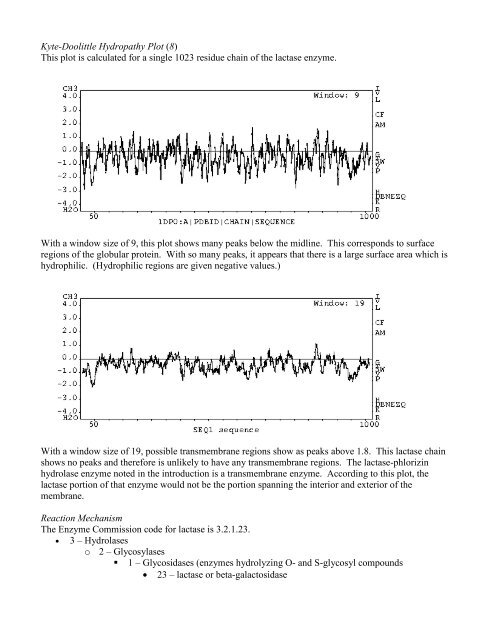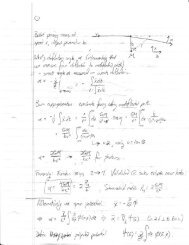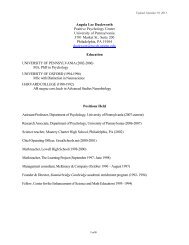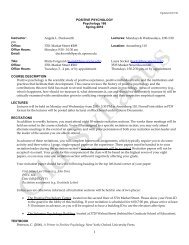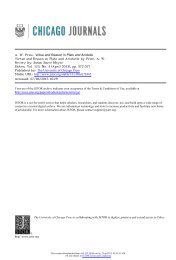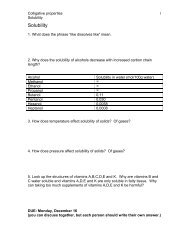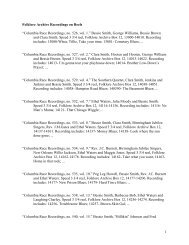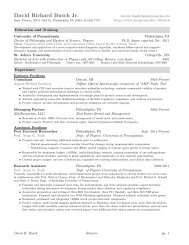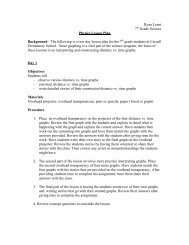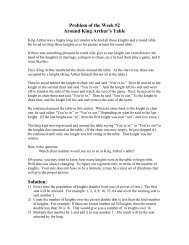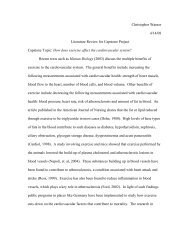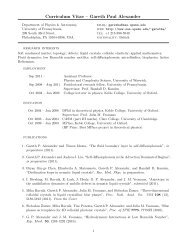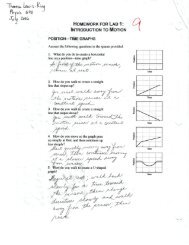Dusty Carroll Lesson Plan 4: Getting to know Lactase Background ...
Dusty Carroll Lesson Plan 4: Getting to know Lactase Background ...
Dusty Carroll Lesson Plan 4: Getting to know Lactase Background ...
You also want an ePaper? Increase the reach of your titles
YUMPU automatically turns print PDFs into web optimized ePapers that Google loves.
Kyte-Doolittle Hydropathy Plot (8)<br />
This plot is calculated for a single 1023 residue chain of the lactase enzyme.<br />
With a window size of 9, this plot shows many peaks below the midline. This corresponds <strong>to</strong> surface<br />
regions of the globular protein. With so many peaks, it appears that there is a large surface area which is<br />
hydrophilic. (Hydrophilic regions are given negative values.)<br />
With a window size of 19, possible transmembrane regions show as peaks above 1.8. This lactase chain<br />
shows no peaks and therefore is unlikely <strong>to</strong> have any transmembrane regions. The lactase-phlorizin<br />
hydrolase enzyme noted in the introduction is a transmembrane enzyme. According <strong>to</strong> this plot, the<br />
lactase portion of that enzyme would not be the portion spanning the interior and exterior of the<br />
membrane.<br />
Reaction Mechanism<br />
The Enzyme Commission code for lactase is 3.2.1.23.<br />
• 3 – Hydrolases<br />
o 2 – Glycosylases<br />
� 1 – Glycosidases (enzymes hydrolyzing O- and S-glycosyl compounds<br />
• 23 – lactase or beta-galac<strong>to</strong>sidase


